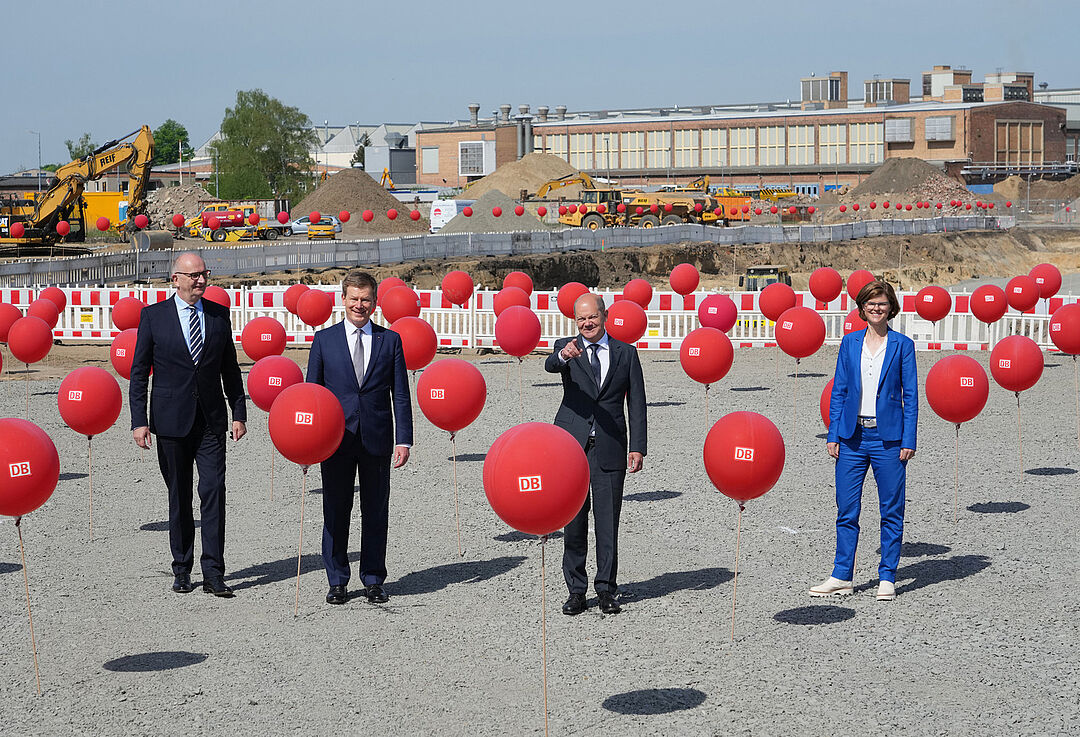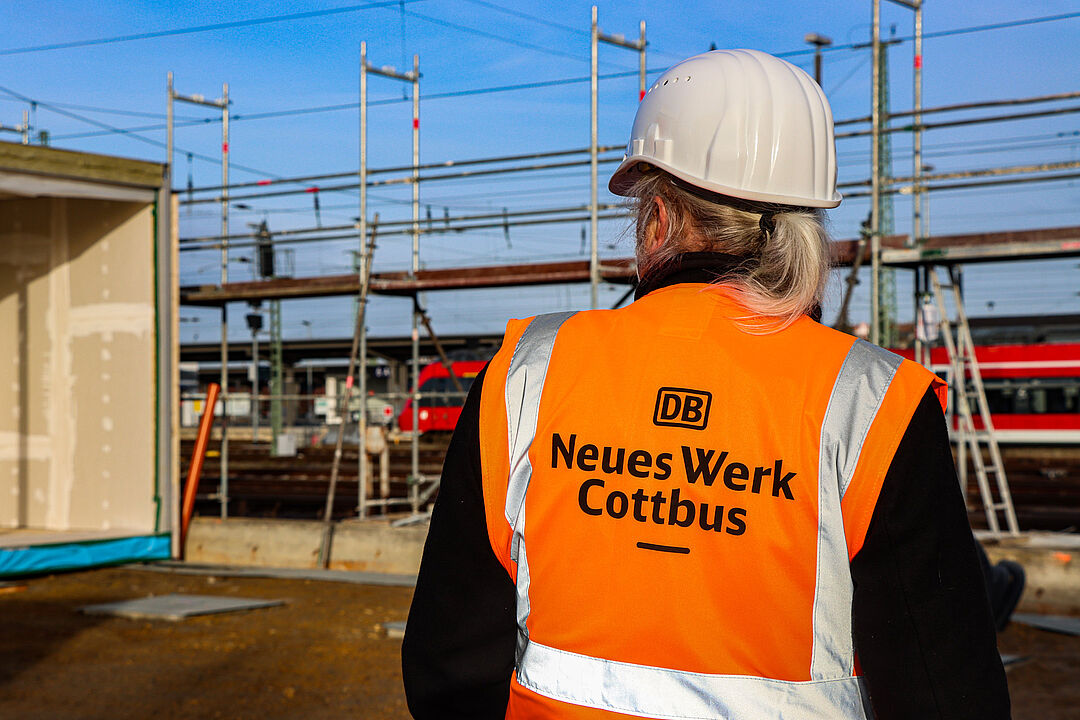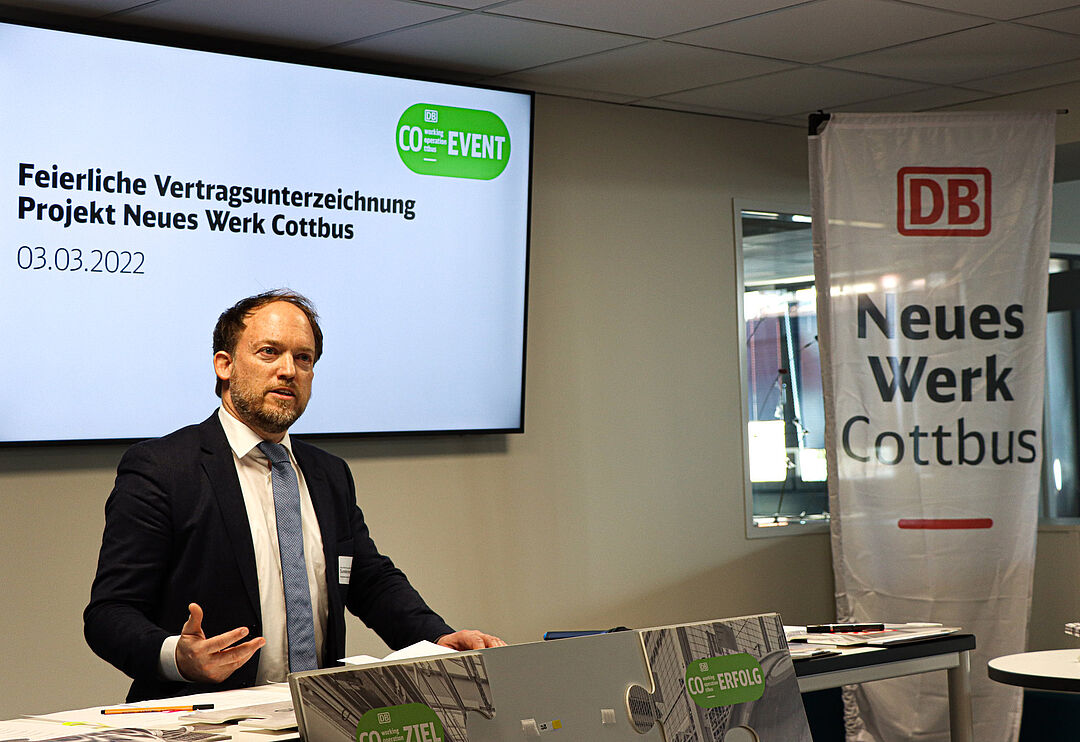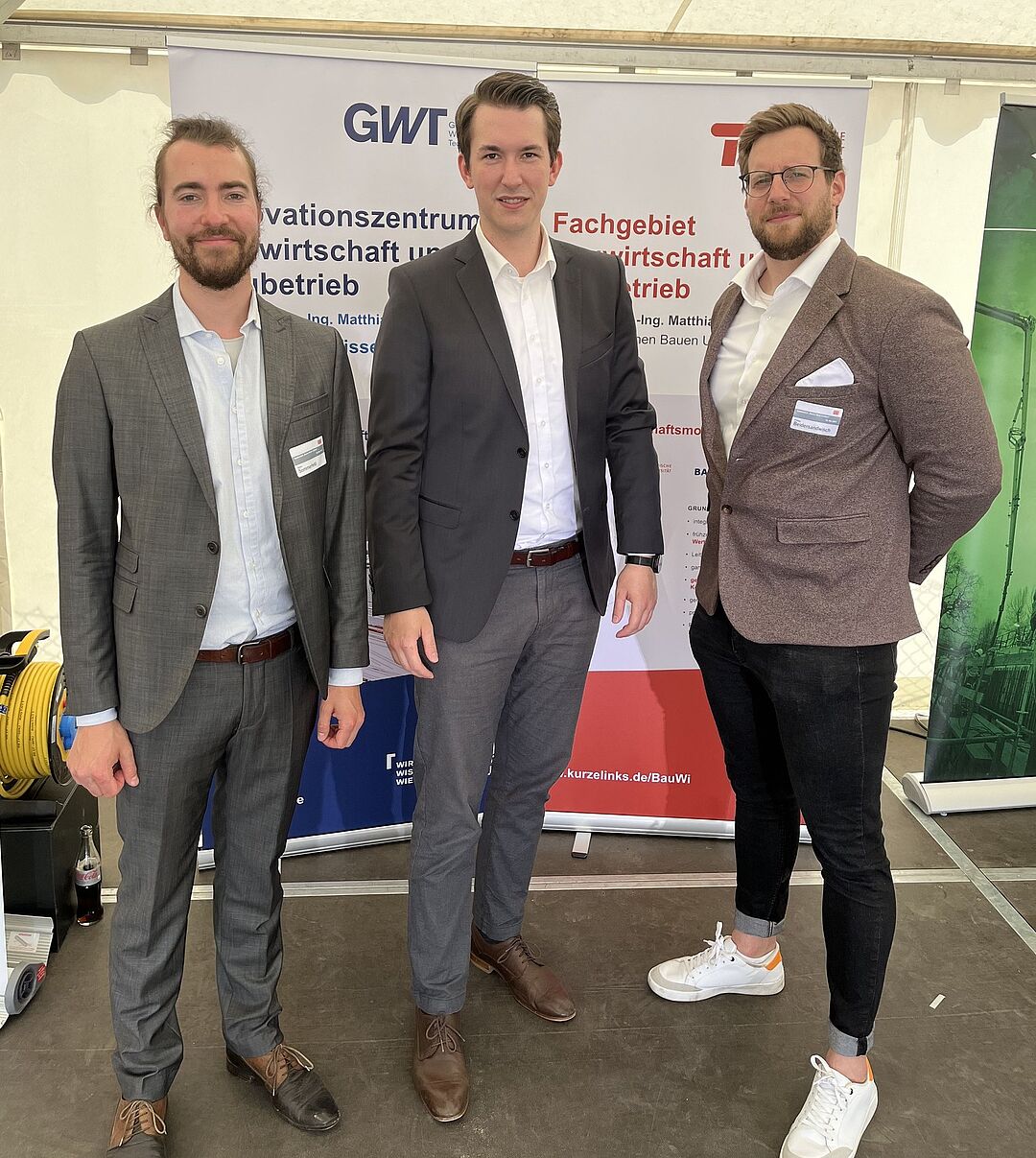Press release | 22 June 2022 | pp
Fast, Efficient, Cost-Saving and Environmentally Friendly Construction
The Rail Partnership Model developed at TU Berlin reaches an important milestone as construction begins on Deutsche Bahn’s New Cottbus Plant pilot project

One aspect of the German government’s long-term goal for the transport transition is moving freight transportation away from road and towards rail and water. This will mean a major increase in construction going forward, particularly across the rail network. There are currently around 100 InterCity Express (ICE 4) trains in operation in Germany, and Deutsche Bahn plans to expand this fleet to 137 trains by 2024. This will require a rapid increase in heavy maintenance capacities and the construction and expansion of manufacturing facilities. But these kinds of projects frequently overrun and are subject to significant cost increases, and this is especially the case for complex large-scale projects. TU Berlin’s Chair of Construction Economics and Construction Management has developed the Rail Partnership Model together with business partners in order to implement complex construction projects on schedule and budget. This model has been rolled out for the first time across Germany in Deutsche Bahn’s New Cottbus Plant pilot project, a major multi-year undertaking. The groundbreaking ceremony took place on 10 May 2022, marking a key milestone for the project.
The guest list featured German chancellor Olaf Scholz and Brandenburg's minister-president Dietmar Woidke, underscoring the national importance of the project. 500 red balloons marked the layout of two large factory halls at the Cottbus construction site, set to be completed in 2024. This is where future maintenance work will be carried out on the 400-meter-long ICE 4 trains. The balloons symbolized the first 500 new industrial jobs and apprenticeships, while the New Cottbus Plant (NWC) is Deutsche Bahn’s most modern maintenance plant and one of the first and most important projects for structural strengthening in the Lusatia coal region. Minister-President Dietmar Woidke described the plant as a flagship project in the structural transformation of Lusatia into a model region for tackling climate change and driving economic growth. In his speech, Chancellor Scholz also highlighted that the innovative project would create high-quality and sustainable employment. “The construction of the new rail plant in Cottbus shows how structural change can work,” he said. The rail industry accounts for more than half a million jobs in Germany.
Project alliance on equal terms: client, planner and construction company working together closely

For Professor Dr.-Ing. Matthias Sundermeier, head of TU Berlin's Chair of Construction Economics and Construction Management, using the Rail Partnership Model in this construction project marks a paradigm shift in the delivery of complex large-scale construction projects. The model was developed together with Deutsche Bahn AG in Frankfurt am Main and the Hauptverband der Deutschen Bauindustrie e.V. (the German construction industry association) in Berlin. “The client, the planner and the construction company are working together on an equal footing in order to bring value to the project. They take joint responsibility for building the New Cottbus Plant,” he explains. “All project decisions are made on the basis of common objectives and what is best for the project itself. All the partners participate in the economic success of the project.”


Rail Partnership Model ensures innovative pathways for developing environmentally and climate-friendly transport infrastructure
The Rail Partnership Model provides a range of options for designing construction and planning contracts and covers aspects of contract awarding, project management and the overall workflow of planning and construction processes in rail infrastructure. The model gives a holistic overview of all the processes involved in the project, which ensures that the entire workflow can be continually optimized.
“It thus not only ensures that large-scale construction projects such as the NWC are completed at record speed, with stable costs and in line with quality standards, but the model is also a driver of engineering innovation for sustainable and digital plant operations,” says Sundermeier. “The NWC is a pilot for genuinely 'new construction,’ and it opens up new avenues for creating environmentally and climate-friendly transportation infrastructure.” And Matthias Sundermeier is very confident that the partnership model will be well received by business and industry: “Deutsche Bahn, for example, has already launched another pilot project in Cologne, involving the refurbishment of two rail overpasses at the city’s Bahnhof Süd train station.”
Further Informations
Contact
| office hours | Wednesday 1.30 pm - 2.30 pm |
|---|
